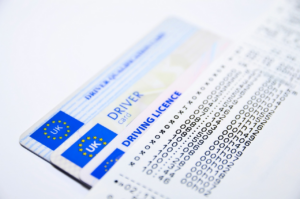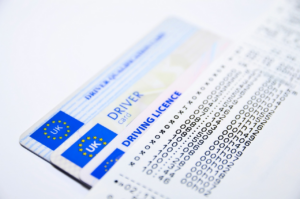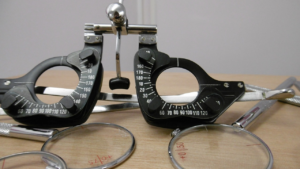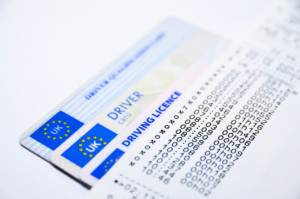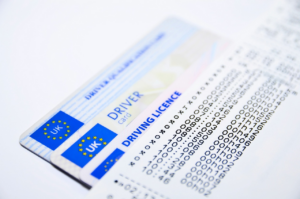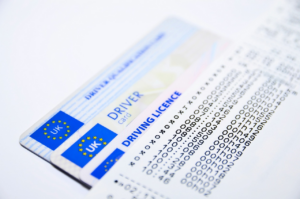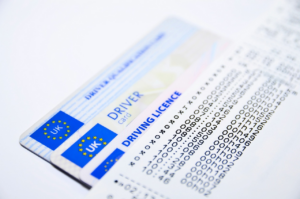Are you nervous about driving on wet roads? It can be a nerve-wracking experience, but with a few tips and tricks, you can navigate wet roads with ease.
Wet roads can be dangerous, as they decrease traction and increase the risk of hydroplaning. However, with these five tips, you’ll be able to stay safe and confident on the road, no matter the weather.
First and foremost, it’s important to check your tires before hitting the road. Make sure they have adequate tread and are properly inflated. This will help improve traction and prevent hydroplaning.
Another important tip is to slow down and keep a safe distance from other vehicles. Wet roads can make it harder to stop, so it’s important to give yourself plenty of time and space to react.
By following these tips and tricks, you’ll be able to stay safe and confident on wet roads.
Check Your Tires
Before hitting the pavement during a downpour, it’s crucial to ensure your tires are in top-notch condition. Be sure to check the tread depth of your tires before driving in the rain.
The minimum tread depth should be 2/32 of an inch, but it’s better to have at least 4/32 of an inch for optimal traction on wet roads. If your tires don’t meet these requirements, it’s time to replace them.
In addition to checking the tread depth, make sure your tires are properly inflated. Underinflated tires can reduce traction and increase the risk of hydroplaning.
Check the recommended tire pressure for your vehicle and use a tire gauge to ensure they are inflated to the correct level. By taking these steps, you can help ensure that your tires are in good condition and ready to handle wet roads.
Slow Down and Keep a Safe Distance
To stay safe in rainy conditions, make sure you slow down and keep a safe distance from other vehicles on the road. Wet roads can be very slippery, and it can take longer to stop your car when you hit the brakes.
Here are some tips to help you stay safe on wet roads:
- Reduce your speed: Slowing down can help you maintain control of your car and reduce the risk of hydroplaning.
- Increase following distance: Keep a safe distance from the car in front of you to give yourself time to react if they suddenly brake or lose control.
- Avoid sudden movements: Sudden movements like hard braking, accelerating, or turning can cause your car to lose traction and slide.
- Use your headlights: Turn on your headlights to improve visibility, and make sure they’re properly adjusted.
- Check your windshield wipers: Make sure your windshield wipers are working properly and replace them if needed.
By following these tips, you can reduce the risk of accidents and stay safe while driving on wet roads. Remember, it’s always better to arrive late than not at all.
Use Your Headlights
Make sure you’re visible to other drivers by turning on your headlights in the rain, so they can see you coming through the mist and spray. This not only helps you see the road ahead better, but it also makes it easier for other drivers to spot you. It’s important to note that while it’s always a good idea to use your headlights while driving, it’s especially crucial during rainstorms.
To make sure your headlights are functioning properly, take a moment to check that they’re clean and free of dirt and debris. If they’re not, give them a quick wipe down with a soft cloth. In addition, you can use your headlights to gauge the distance between your car and the one in front of you. This can be done by using the table below as a guide:
| Speed | Safe Following Distance |
|---|---|
| 30 mph | 3 seconds |
| 40 mph | 4 seconds |
| 50 mph | 5 seconds |
| 60 mph | 6 seconds |
| 70 mph | 7 seconds |
By following these guidelines, you can ensure that you have enough space to stop safely in case of sudden braking. Remember, visibility is key when driving on wet roads, so don’t forget to use your headlights.
Be Gentle with Your Brakes
Handling your vehicle’s brakes with care during rainy weather can be the difference between a safe and a hazardous drive. Wet roads can reduce the friction between your tires and the road, making it easier to lose control of your vehicle. Sudden stops or harsh braking can cause your wheels to lock up and your car to skid, increasing the risk of an accident.
Here are some tips to help you manage your brakes on wet roads:
- Increase your following distance to allow for more reaction time and avoid sudden stops.
- Slow down gradually by easing off the gas pedal and braking gently instead of slamming on the brakes.
- Use your gears to slow down instead of your brakes, if possible.
- Avoid hard braking while turning or going downhill, as it can cause your car to slide.
- If you have anti-lock brakes, keep your foot firmly on the brake pedal and let the system do its job.
Remember, wet roads require a different driving technique than dry roads. By handling your brakes with care, you can reduce the risk of accidents and arrive safely at your destination.
Avoid Standing Water
When driving on wet roads, it’s important to avoid standing water as much as possible.
Steer clear of puddles and flooded areas, as they can increase the risk of hydroplaning.
Keep a close eye on the road ahead and watch for any signs of standing water, and adjust your speed and driving accordingly to stay safe.
Steer Clear of Puddles and Flooded Areas
Avoiding puddles and flooded areas will help you maintain control of your vehicle and prevent hydroplaning, ensuring a safer and smoother drive.
When you drive through a puddle, the water can cause your tires to lose traction with the road, which can lead to hydroplaning. This happens when a layer of water builds up between your tires and the road, causing your vehicle to slide uncontrollably. Hydroplaning can be very dangerous, especially at high speeds, and can cause you to lose control of your vehicle and potentially crash.
To avoid puddles and flooded areas, it’s important to keep an eye out for any standing water on the road. If you see a puddle ahead, try to drive around it rather than through it. If you can’t avoid it, slow down before you reach the puddle and try to drive through it as smoothly as possible. Be sure to keep a firm grip on the steering wheel and avoid sudden movements, as this can cause your vehicle to slide.
By avoiding puddles and flooded areas, you can help ensure a safe and stress-free drive, even in wet weather conditions.
Watch for Hydroplaning
You don’t want to lose control of your car on a rainy day, so make sure to keep an eye out for hydroplaning.
Hydroplaning occurs when your car’s tires lose contact with the road due to a layer of water on the surface. This can happen at speeds as low as 30 mph, so it’s important to be aware of the potential for hydroplaning at all times when driving in wet conditions.
To reduce the risk of hydroplaning, make sure your tires have adequate tread depth and are properly inflated.
Avoid sudden movements or hard braking, as these can cause your car to skid or slide on the wet surface.
If you do start to hydroplane, remain calm and gradually ease off the accelerator while steering in the direction of the skid. Avoid slamming on the brakes, as this can cause your car to spin out of control.
By staying alert and taking these precautions, you can stay safe and in control while driving on wet roads.
Stay Alert and Focused
Stay sharp and keep your attention on the road ahead, so you can react quickly to any unexpected obstacles or hazards that may come your way.
Driving on wet roads requires extra focus, as your visibility may be reduced and your tires may have less traction on the slick surface. Make sure to keep a safe following distance behind other vehicles, as sudden stops can be more difficult to make on wet roads.
It’s also important to avoid distractions while driving on wet roads. Put away your phone and avoid eating or drinking while behind the wheel. Any distraction could cause you to lose focus and increase your risk of being involved in an accident.
Remember, the key to driving safely on wet roads is to stay alert and focused at all times.
Practice Defensive Driving
By practicing defensive driving techniques, you’ll be able to anticipate and react to potential hazards on the road, making you a safer and more confident driver.
When driving on wet roads, it’s important to maintain a safe following distance from the vehicle in front of you. This will give you enough time to react if they suddenly brake or lose control. Additionally, avoid sudden movements such as hard braking or sharp turns, as these can cause your car to lose traction and lead to hydroplaning.
Another important aspect of defensive driving on wet roads is to use your headlights properly. Turn on your headlights whenever you need to use your windshield wipers, as this will help increase your visibility to other drivers. Additionally, avoid using high beams as they can reflect off the wet pavement and impair your visibility.
By practicing these defensive driving techniques, you can reduce your risk of accidents and enjoy a safer drive on wet roads.
Know When to Pull Over
When it’s pouring outside, it’s crucial to be aware of when it’s necessary to pull over to protect yourself and others on the road.
If you’re struggling to see or control your vehicle, it’s time to find a safe place to wait out the storm. Heavy rain can create hazardous driving conditions, making it difficult to stop, turn, or stay in your lane. If you’re hydroplaning, sliding, or experiencing any other issues, it’s best to pull over and wait for the storm to pass.
It’s important to note that you shouldn’t just stop in the middle of the road if you’re having trouble driving. Instead, try to find a safe location off the road, such as a parking lot or rest area.
If you can’t find a safe spot to pull over, turn on your hazard lights and drive slowly until you reach a better location. Remember, safety should always come first when driving in wet conditions.
Frequently Asked Questions
What are some common mistakes drivers make when driving on wet roads?
When driving on wet roads, it’s important to avoid common mistakes that could lead to accidents.
One mistake drivers often make is driving too fast for the conditions. Wet roads reduce traction, so accelerating, braking, and turning become more difficult.
Another mistake is following too closely behind other vehicles, as it reduces reaction time and increases the risk of a collision.
Drivers should also avoid sudden movements, such as jerky steering or slamming on the brakes, as these can cause the vehicle to lose control.
Lastly, neglecting to maintain proper tire pressure and tread depth can reduce traction on wet roads.
By being aware of these mistakes and taking necessary precautions, you can stay safe while driving on wet roads.
How do wet road conditions affect stopping distance?
When driving on wet roads, it’s important to understand how the conditions can affect your stopping distance. As your tires encounter water, they must work harder to maintain traction and control. This means that your vehicle will take longer to come to a complete stop, and you’ll need to adjust your driving accordingly.
In fact, your stopping distance can increase by up to double on wet roads compared to dry ones. To stay safe, make sure to increase your following distance, reduce your speed, and brake gently and early to avoid skidding or hydroplaning.
Remember, it’s always better to arrive a few minutes later than to risk a dangerous accident.
Can using cruise control be dangerous when driving on wet roads?
Using cruise control when driving on wet roads can be dangerous because it may cause your car to accelerate if it detects a slight decrease in speed. This can lead to hydroplaning or losing control of your vehicle. Additionally, using cruise control can make it more difficult to react to sudden changes in road conditions, such as a puddle or a patch of ice.
It’s best to avoid using cruise control in wet conditions and instead use your foot to control your speed. Stay alert to changes in the road ahead.
Should you avoid driving on wet roads altogether if possible?
When it comes to driving on wet roads, the safest option is to avoid it altogether if possible. However, sometimes it may be necessary to drive in wet conditions. In such cases, there are certain precautions you can take to minimize the risk of accidents.
Remember to slow down and increase your following distance, as wet roads can reduce your vehicle’s traction. Additionally, make sure your tires are properly inflated and have good tread depth. Avoid sudden movements and braking. Use your headlights to improve visibility.
By taking these steps, you can help keep yourself and others safe while driving on wet roads.
What should you do if you hydroplane while driving on wet roads?
If you hydroplane while driving on wet roads, remain calm and try not to panic.
Take your foot off the accelerator and avoid slamming on the brakes or making any sudden movements. Instead, steer in the direction you want to go and gently apply the brakes if necessary.
It’s important to avoid over-correcting, as this can lead to losing control of your vehicle. Keep both hands on the steering wheel and maintain a steady speed until you regain traction.
Remember, hydroplaning can happen to anyone, so it’s important to stay alert and drive cautiously on wet roads.
Conclusion
So, there you have it! These are the five essential tips and tricks that you need to know to drive safely on wet roads.
Always remember to check your tires, slow down and keep a safe distance, use your headlights, be gentle with your brakes, and avoid standing water.
Additionally, you should always stay alert and focused, practice defensive driving, and know when to pull over if things become too dangerous.
By following these simple guidelines, you can significantly reduce your chances of getting into an accident on wet roads.
Always remember that safety comes first, and it’s better to arrive at your destination a little later than to never arrive at all.
Drive carefully and stay safe out there!












































